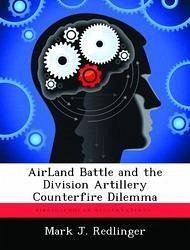This monograph searches for an answer to the question: Does the current division artillery have the capability to perform both its direct support and counterfire missions effectively within the demands of AirLand Battle Doctrine? Historically the counterfire mission was accomplished by corps artillery. However, the increased frontage of a corps on the dispersed battlefield envisioned by the Active Defense Doctrine led to a change in counterfire doctrine. This was appropriate for the Active Defense Doctrine developed in 1973, but this paper will argue that the current AirLand Battle Doctrine imposes different demands. These demands require a new counterfire doctrine for corps and division artillery. This monograph searches for a means to reconcile the demands placed on division artillery by its direct support mission, its counterfire mission, and its limited artillery assets. A lessons-learned examination of counterfire from World War Two until the present is the starting point, highlighting those historically key elements which counterfire doctrine should address. Secondly, the monograph examines the missions of division artillery in the perspective of AirLand Battle Doctrine. Thirdly, we will compare American and Soviet artillery doctrine and weapon systems. This comparison seeks to understand the artillery employment on a European battlefield and to answer the question whether the current division artillery structure can accomplish its mission. Finally, the paper proposes a possible solution to reconciling the dilemma faced by the division artillery commander and his counterfire mission. This proposal will suggest a doctrinal change which once again places the counterfire mission primarily with the corps artillery commander. Along with this doctrinal change will be the formation of counterfire battalions consisting of target acquisitions assets and multiple launched rocket system batteries. These counterfire battalions will be located at corps artillery.








